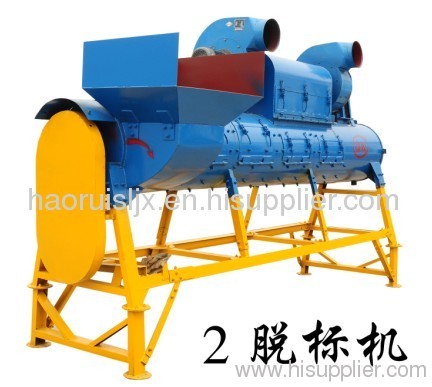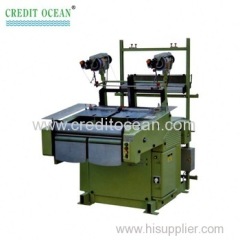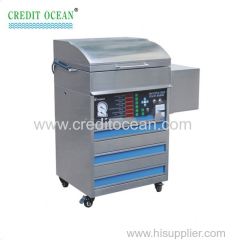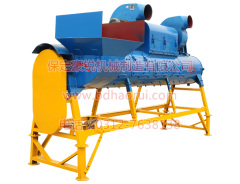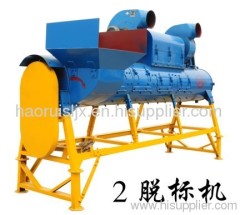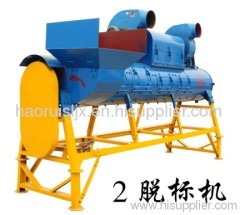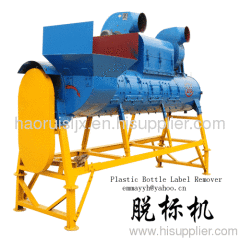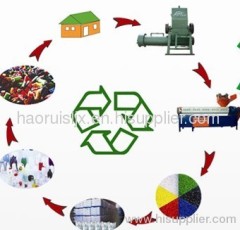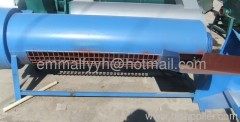
|
Baoding Haorui Machinery Manufacturing Co., Ltd.
|
Efficient label removing machine
| Payment Terms: | T/T,L/C,WU, |
| Place of Origin: | Hebei, China (Mainland) |
|
|
|
| Add to My Favorites | |
| HiSupplier Escrow |
Product Detail
removing the labels. The caps and cap rings (those made of polypropylene) are separated and also recycled.good quality
separating the bottles from the other types of plastic: after the scrap plastic arrival to the factory, in the first part of the recycling drive is sorting the bottles according to their color and composition and removing the labels. The caps and cap rings (those made of polypropylene) are separated and also recycled.
There will be 5-15 cm in diameter, length of 15 to 30 cm pet bottle, beverage bottle, plastic bottle, coke bottle into the paper to cover off inside the separator inlet, separator spindle is equipped with separation of the label on the bottles and caps off your caps falling into the screw axis under the screen mesh will be launched, pet bottle blower separate label paper before out of the machine, then put the pet bottle. Medium-sized depiler 700 kilograms per hour material, large machine per hour material 1000 kg, to take off the paper, 99% to cover rate is about 70%
recycling materials:
Label remover size:
Machine type | Machine name | Machine size | Tube thickness | Machine weight | Motor power | ||
length | width | height | |||||
600type | Label remover | 430cm | 200cm | 110cm | 0.6cm | 1000kg | 11KW |
600type | Label remover | 300cm | 200cm | 200cm | 0.6cm | 800kg | 7.5KW |
600type | Label remover | 400cm | 200cm | 200cm | 0.8cm | 1200kg | 11KW |
600type | Label remover | 400cm | 200cm | 200cm | 0.6cm | 1050kg | 11KW |
There will be 5-15 cm in diameter, length of 15 to 30 cm pet bottle, beverage bottle, plastic bottle, coke bottle into the paper to cover off inside the separator inlet, separator spindle is equipped with separation of the label on the bottles and caps off your caps falling into the screw axis under the screen mesh will be launched, pet bottle blower separate label paper before out of the machine, then put the pet bottle. Medium-sized depiler 700 kilograms per hour material, large machine per hour material 1000 kg, to take off the paper, 99% to cover rate is about 70%
recycling materials:
Number 1 Plastics
PET or PETE (polyethylene terephthalate)
Found in: Soft drink, water and beer bottles; mouthwash bottles; peanut butter containers; salad dressing and vegetable oil containers; ovenable food trays.
Recycling: Picked up through most curbside recycling programs.
Recycled into: Polar fleece, fiber, tote bags, furniture, carpet, paneling, straps, (occasionally) new containers
PET or PETE (polyethylene terephthalate)
Found in: Soft drink, water and beer bottles; mouthwash bottles; peanut butter containers; salad dressing and vegetable oil containers; ovenable food trays.
Recycling: Picked up through most curbside recycling programs.
Recycled into: Polar fleece, fiber, tote bags, furniture, carpet, paneling, straps, (occasionally) new containers
PET plastic is the most common for single-use bottled beverages, because it is inexpensive, lightweight and easy to recycle. It poses low risk of leaching breakdown products. Recycling rates remain relatively low (around 20%), though the material is in high demand by remanufacturers
Didn't find what you're looking for?
Post Buying Lead or contact
HiSupplier Customer Service Center
for help!
Related Search
Removing Machine
Label Machine
Label Cutting Machine
Label Printing Machine
Label Die Cutting Machine
Label Flexo Printing Machine
More>>

